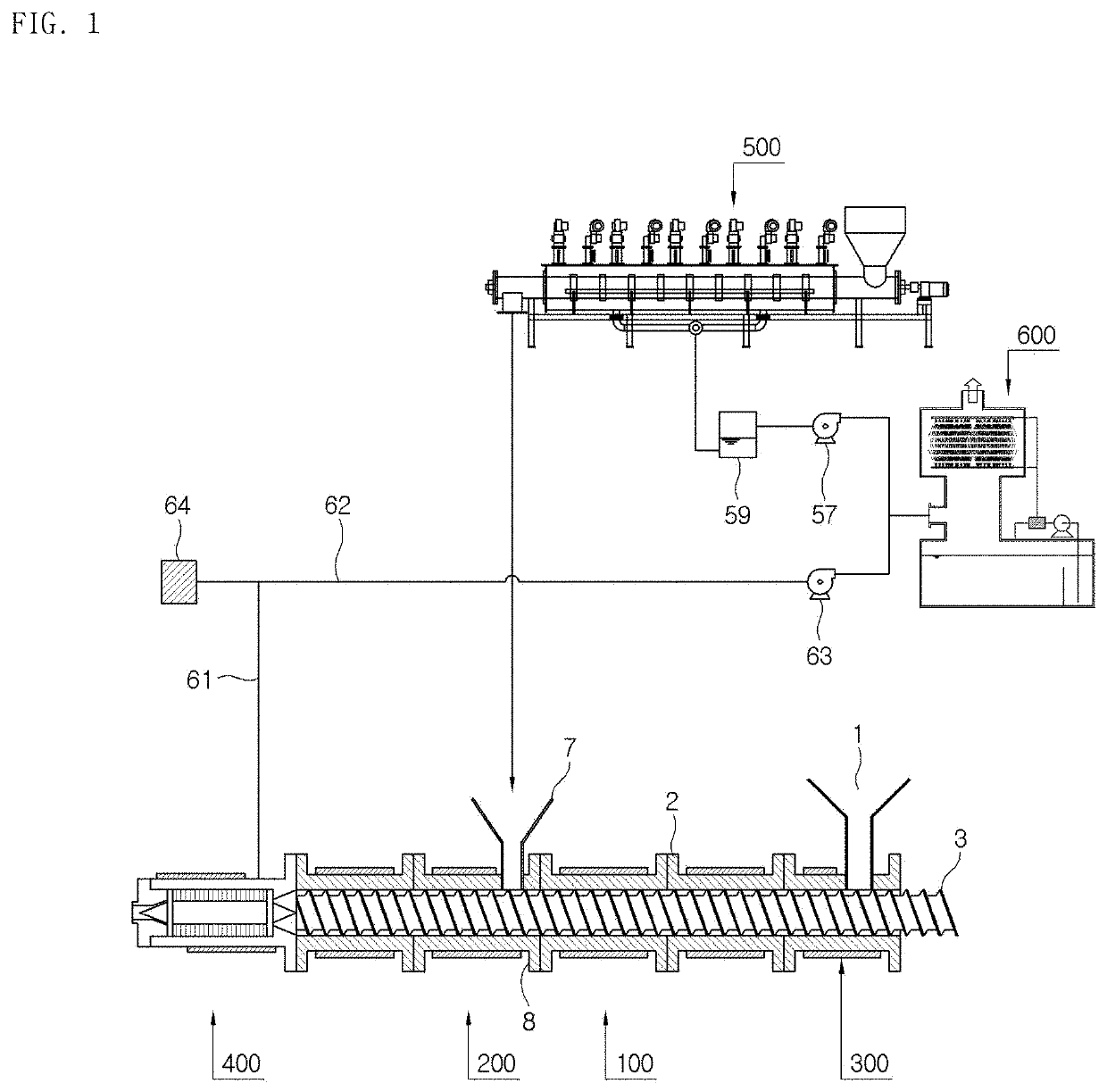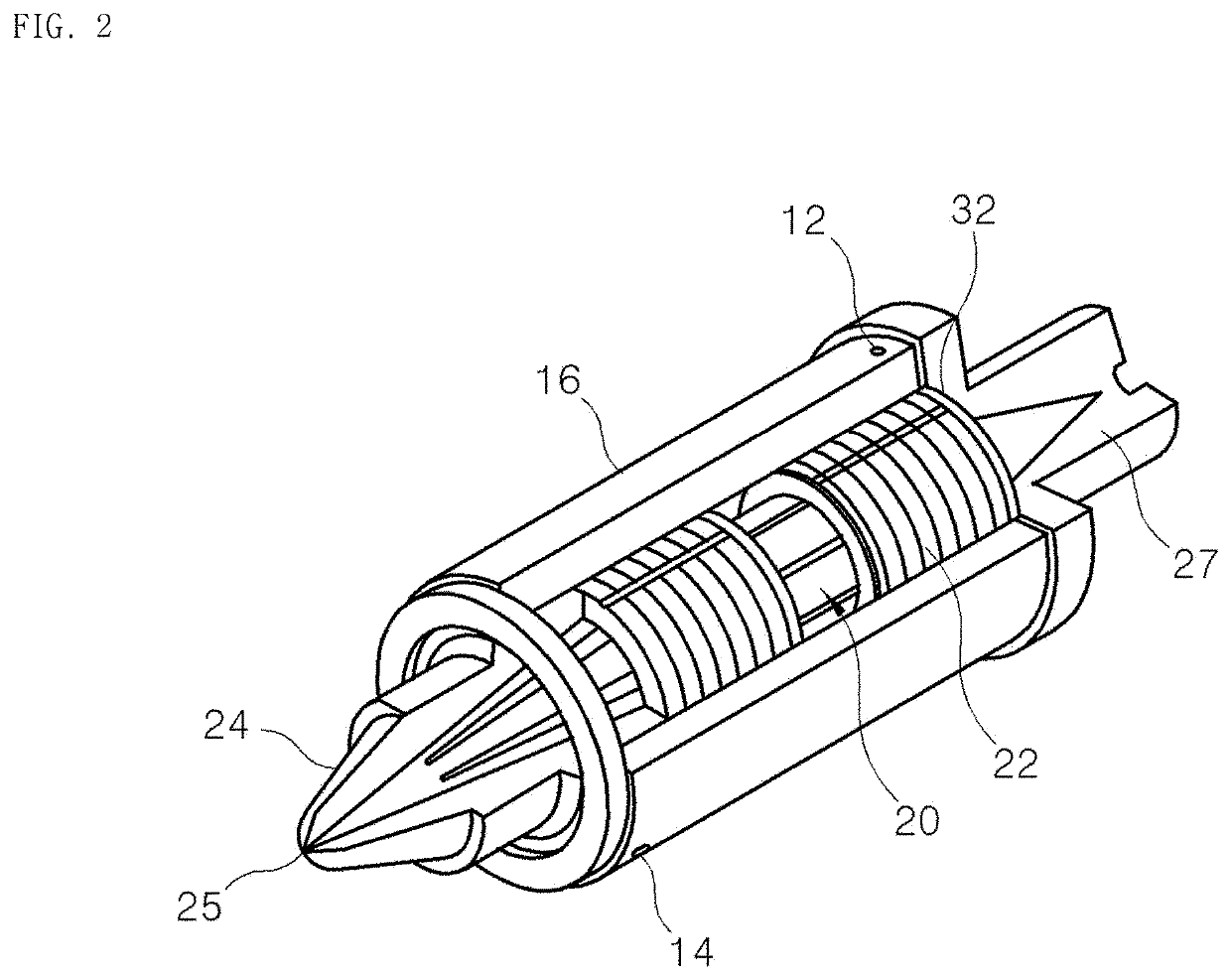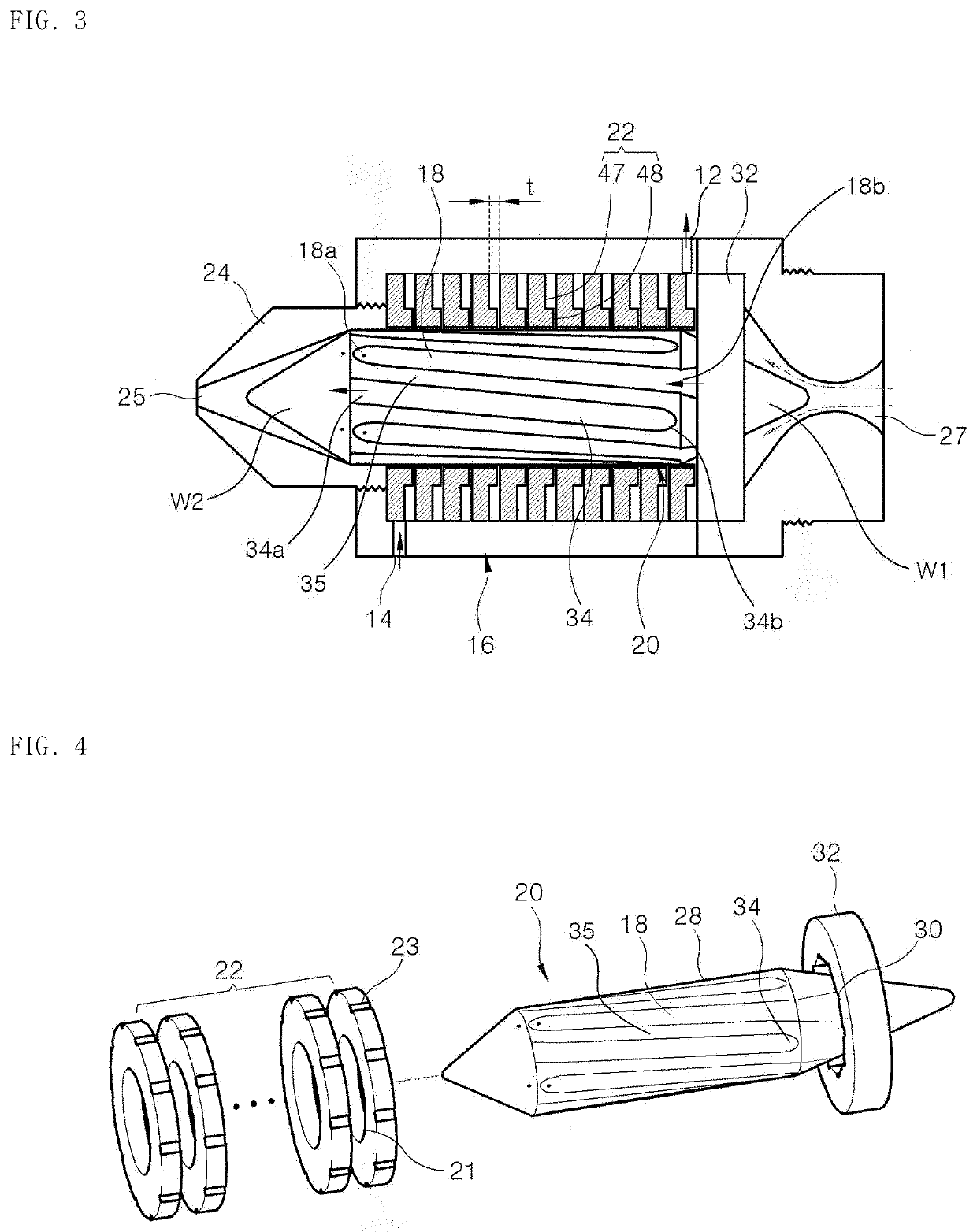Facility for forming wood plastic composite with microwave and degassing device
a technology of wood plastic composite and degassing device, which is applied in the field of forming wood plastic composite, can solve the problems of plastic materials, wood is vulnerable to pests, and has a risk of fire, and achieves the effect of maintaining the physical properties of the wood plastic composite to be formed
- Summary
- Abstract
- Description
- Claims
- Application Information
AI Technical Summary
Benefits of technology
Problems solved by technology
Method used
Image
Examples
Embodiment Construction
[0033]A facility for forming a wood plastic composite according to the present disclosure will be described in detail with reference to the accompanying drawings.
[0034]It should be noted that, in adding reference numerals to configuration elements of each drawing, the same configuration elements are denoted by the same reference numerals as possible even though the configuration elements are illustrated in other drawings.
[0035]In addition, in describing the present disclosure, when it is determined that detailed description on related well-known structures or functions may obscure the subject matter of the present disclosure, the detailed description will be omitted.
[0036]FIG. 1 schematically illustrates a facility for forming a wood plastic composite according to the present disclosure.
[0037]As illustrated in FIG. 1, a facility for forming a wood plastic composite according to the present disclosure includes an extruder 100 that melts a polymer resin and extrudes the melted polymer...
PUM
| Property | Measurement | Unit |
|---|---|---|
| melting point | aaaaa | aaaaa |
| size | aaaaa | aaaaa |
| frequency | aaaaa | aaaaa |
Abstract
Description
Claims
Application Information
 Login to View More
Login to View More - R&D
- Intellectual Property
- Life Sciences
- Materials
- Tech Scout
- Unparalleled Data Quality
- Higher Quality Content
- 60% Fewer Hallucinations
Browse by: Latest US Patents, China's latest patents, Technical Efficacy Thesaurus, Application Domain, Technology Topic, Popular Technical Reports.
© 2025 PatSnap. All rights reserved.Legal|Privacy policy|Modern Slavery Act Transparency Statement|Sitemap|About US| Contact US: help@patsnap.com



